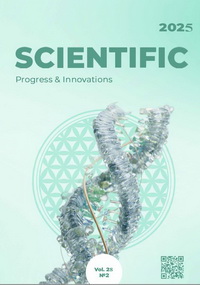Effectiveness of corn pest control systems under the conditions of the Ukrainian Steppe
DOI:
https://doi.org/10.31210/spi2025.28.02.04Keywords:
corn, insecticides, phytophagous pests, harmful insects, yield.Abstract
The article presents the results of long-term scientific research aimed at evaluating the effectiveness of various pest control systems for maize under the specific natural and climatic conditions of the Northern Steppe of Ukraine. It has been proven that one of the main limiting factors hindering the realization of maize's yield potential is the complex detrimental effect of phytophagous pests, which form a significant entomological complex within agrocenoses. Among the key pest species causing considerable damage to maize crops in the Steppe zone, the most widespread and dangerous were identified as wireworms (click beetle larvae), chafer beetles, the European corn borer, aphids, thrips, and the invasive quarantine pest – the Western corn rootworm. Within the framework of the experimental studies, a comparative assessment was conducted to determine the efficacy of a range of modern insecticidal formulations belonging to different chemical classes and exhibiting various modes of action. Specifically, insecticides based on thiamethoxam, imidacloprid, chlorantraniliprole, lambda-cyhalothrin, and alpha-cypermethrin were examined. It was found that the application of the systemic insecticide based on thiamethoxam at a rate of 0.35 L/ha resulted in a 72.3 % reduction in pest populations in maize fields compared to the untreated control. At the same time, the use of chlorantraniliprole at a rate of 0.15 L/ha reduced the number of phytophagous pests by 68.9 %, which also confirms the high efficacy of this product in suppressing harmful insect populations. The highest maize grain yield – 9.24 t/ha – was recorded in the variant where a combined insecticide containing imidacloprid and lambda-cyhalothrin was applied. Compared to the control variant without pest control measures, the yield increase amounted to 1.83 t/ha, representing an almost 25 % improvement. It is important to emphasize that the study results confirm the high effectiveness of an integrated maize protection system, which combines chemical, agrotechnical, and biological methods of influencing the entomocomplex. This approach significantly reduces the overall pesticide load on the agroecosystem while maintaining high crop productivity. The implementation of integrated protection strategies meets the current demands for ecological safety in agricultural production, ensures the economic viability of applied technologies, and allows for the adaptation of pest control systems to the regional climatic and biotic conditions.
Downloads
Published
How to Cite
Issue
Section
License
Copyright (c) 2025 Scientific Progress & Innovations

This work is licensed under a Creative Commons Attribution 4.0 International License.

 Creative Commons Attribution 4.0 International Licens
Creative Commons Attribution 4.0 International Licens